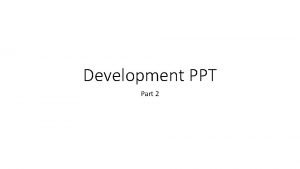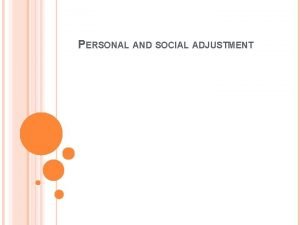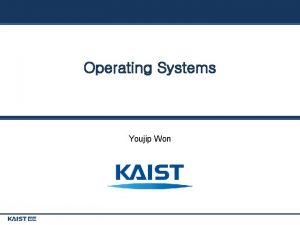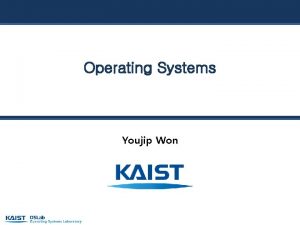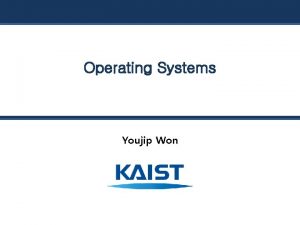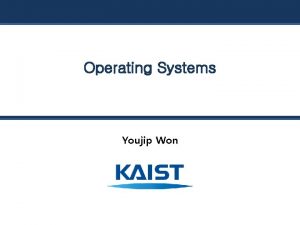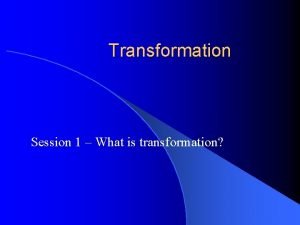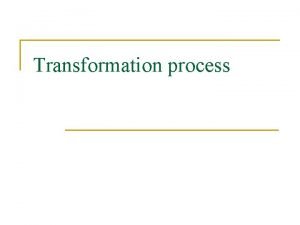Who won the Polish transformation Structural Adjustment Programme
















- Slides: 16

Who won the Polish transformation?

Structural Adjustment Programme lost jobs in the most feminized sectors of labour market cutbacks in health services and education state’s tasks were moved into private sphere care of the elderly and disabled or diseased members of family is woman’s problem

Structural Adjustment Programme Polish version new opportunities for educated and wealthy woman huge inequalities among woman from different classes and social groups

Ideology and Culture in Policy, and Practice backlash trinity conservatives populist nationalists Catholic Church

delegitimazation gender equality politically, legally and culturally The restoration of a ‘natural’ social order by policies and laws supportive of an essentialized sex/gender order. Women’s rights advocates – lineal descendants of communist party women’s organization or liberal humanists or radical feminists. Women as bearers of equal rights with men – ‘selfishness’ with destructive consequences for the family and, ultimately, the nation.

Neoliberalism Ostensibly sex/gender neutral in postulates. Freedom (rather than justice or equality) as fundamental political value. Each person is accountable for own life by making informed individual choices. Challenge to the principle that the state should provide adequate social insurance benefits. Value of entrepreneurial risk-taking, however co-incidentally identified culturally as a component of a hegemonic masculinity. Women’s assumed risks in childbearing is of little or no significance for neo-liberal theory or practice.

“Women, losing on the labour market, lose in all fields of social activity. Stereotypical images of women and their roles, related to their discrimination on the labour market, can be seen at other levels of social practice - in the media, education, everyday discourse. Women’s place is in the private sphere and – as a result – they are pushed back from the public sphere: from work to politics. Women’s discrimination in various sphere of social life is accompanied by symbolic discrimination, supported by various ideologies” (Izabela Desperak, 2009: 55).

Labour market Lower employment rate among women (57% vs. 72% among men in 2012). Women are more likely to work part time. Women are prone to unemployment (especially long-term unemployment). Women need more time to find a job. Horizontal segregation (60% of men and 40% of women employed in „typical” occupations). Vertical segregation: glass ceiling, glass wall effect, sticky floor, glass elevator; 72% of men and 32% of women had a managerial position. Gender wage gap: man can earn app. 30% more than woman.

Labour market “Women work on a separate, based on different rules, labour market, which is sometimes called the secondary labour market" (Desperak, 2009: 62). Setting up a business as a way to escape from discrimination and the glass ceiling Increasing number of women leading own business (outside agriculture) between 1989 -2001 (170% of women in comparison to 104% of men). Sociological profile of female business owners: well educated (at least secondary level), usually aged 40 years or above, married with commonly one or two grown up children and many years’ experience of working in public sector High number (25%) of single women.

Welfare Feminization of poverty (especially single mothers and numerous families): women as managers of Polish poverty. Lower pensions for women. Shortage of institutional childcare

Politics 61 presidential candidates in 5 elections (1990, 1995, 2000, 2005, 2010) out of which only 2 women: ü 1995 – Hanna Gronkiewicz-Waltz (1, 26% votes) ü 2005 – Henryka Bochniarz (2, 76% votes) Only 1 woman as the Prime Minister ü Hanna Suchocka: 11 July 1992 - 26 October 1993 395 Ministers out of which only 35 women (1998 -2009) Members of Parliament: from 20% (first election) to 13% of women by the end of 90. Quota system (2011): 23, 91% women and 76, 09% men.

Politics – local level ü Local government (2010): 30, 67% female candidates. ü 13, 81% female candidates for the mayor/president. ü 24% women elected as councillors. ü 10% women elected as the mayors. ü 6% women elected as presidents.

Poland 2030. Development Challenges. A Long-term Strategy of Developing Poland Identifies the key challenges – opportunities & threats Offers the multidimensional diagnosis of the areas Designs the path of development => polarisation and diffusion model Recommends the directions of state policy =

Neoliberal perspective as anti-democratic and inequalities reinforcing All social life dimensions relying on the economic rationality Citizens fragmented and reduced to utilitarian roles and functions Withdrawal from the human rights discourse => claims&demands Poland as a business project – the benefits-cost calculation „The margins” responsible for its marginalisation The state withdrawal from the public sectors Cost of the fast development on the small and middle income households

Gender equality issues – neutrality intensifying inequalities No equality and anti-discrimination education Employment and labour market => lack of diagnosis and counteraction for the pre-existing inequalities Women as „care-securers” in neoliberal care model Parenting duties - who would stay at home and fall out of the job-market? Taking-care roles vs. pension and retirements system Omission of such important domains of women’s experience like violence or poverty

New framework – gender & intersectionality of exclusion “Women are integrated with the techno-financial capitalism in multiple ways, as targeted paid and unpaid labour, as consumers, credit recipient, as shareholders, and a few of them as investment bankers. Production of inequality is an in-built systemic feature. The imaginary woman, the oppressed political subject of feminist discourse does not exist any more. Oppression took new forms, existential insecurity, work intensification, reprivatizing the costs of social reproduction, commercialization of everyday life, and colonizing private space of home, bombardment of bodies with toxics, while at the same time giving some women the option to advance by engaging in exploiting others. It seems futile to keep on talking about formal equality or general exclusion of women (unless in tactical interventions). The problem is not exclusion, but how, on which terms we are integrated , and the new social cleavage between integrated and exploitable and abandoned unexploitable. Women are located at both sides of this divide”. Ewa Charkiewicz
 Normal polish notation java
Normal polish notation java Reversed polish notation expression
Reversed polish notation expression Elements of primary health care
Elements of primary health care Main concept of the world system theory
Main concept of the world system theory Selvarany rasiah
Selvarany rasiah Early intervention transformation programme
Early intervention transformation programme Scottish radiology transformation programme
Scottish radiology transformation programme Công thức tiính động năng
Công thức tiính động năng Thế nào là mạng điện lắp đặt kiểu nổi
Thế nào là mạng điện lắp đặt kiểu nổi Dạng đột biến một nhiễm là
Dạng đột biến một nhiễm là Nguyên nhân của sự mỏi cơ sinh 8
Nguyên nhân của sự mỏi cơ sinh 8 Bổ thể
Bổ thể Vẽ hình chiếu đứng bằng cạnh của vật thể
Vẽ hình chiếu đứng bằng cạnh của vật thể Phản ứng thế ankan
Phản ứng thế ankan Thiếu nhi thế giới liên hoan
Thiếu nhi thế giới liên hoan Sự nuôi và dạy con của hươu
Sự nuôi và dạy con của hươu Alleluia hat len nguoi oi
Alleluia hat len nguoi oi



